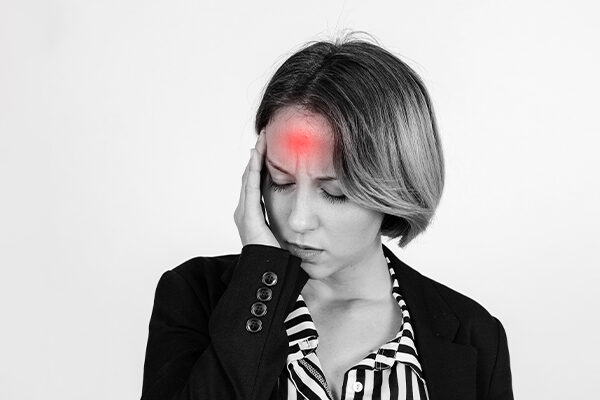Understanding bladder endometriosis is crucial because it affects the quality of life and health outcomes for individuals with endometriosis. It is known as a medical condition where tissue similar to the lining of the uterus, also known as endometrium, grows outside the uterus. However, when this tissue grows inside or on the surface of the bladder, it is known as bladder endometriosis, which can lead to bladder pain.
This article will explore the symptoms, diagnosis, treatment and self-care options of bladder endometriosis. Additionally, it will cover the stages of endometriosis for better understanding.
Bladder Pain & Endometriosis – What You Need to Know
Normally, during a typical menstrual cycle, the endometrial tissue inside the uterus thickens and is shed through the vagina. However, in the case of endometriosis, similar tissue grows outside the uterus and cannot exit the body. This leads to painful menstrual cramps, heavy bleeding, chronic pelvic pain, and other symptoms.
Sometimes, this endometrial tissue can also grow in or on the bladder, a condition known as bladder endometriosis. Although uncommon, bladder endometriosis can cause severe pain when it occurs.
Bladder Endometriosis – Is it Common?

However, bladder endometriosis is quite rare, with only about 1% of those with endometriosis experiencing tissue growth in the urinary tract. Within the urinary system, the bladder is the most frequently affected organ, with almost around 85% of urinary tract endometriosis cases occurring in the bladder only.
Read More: Managing Bladder Pain
Bladder Endometriosis – What Are the Symptoms?
Researchers estimate that about 50% of individuals with endometriosis in the urinary tract, including the bladder, show no symptoms.
However, for those who do experience some symptoms, bladder endometriosis can manifest as:
- Urgent and frequent need to urinate
- Pain when the bladder is full
- Burning or painful urination
- Blood in the urine
- Pelvic pain
- Lower back pain on one side
In case, when endometriosis affects other areas of the pelvis, symptoms may include:
- Painful periods
- Pain during sex
- Bleeding between periods
- Heavy menstrual flow
- Extreme fatigue
- Nausea
- Diarrhea
Bladder Endometriosis – What are the Possible Causes?
The exact cause of endometriosis remains unknown. However, certain factors can increase the likelihood of developing the condition, known as risk factors. These include:
| Bladder Endometriosis – Causes |
|---|
|
Diagnosis
To diagnose bladder endometriosis, a doctor will begin with a physical pelvic exam. The next step typically involves checking for blood in the patient’s urine. Following this, the doctor may conduct additional tests, such as:
- Ultrasound: This scan uses high-frequency sound waves to create images of the body’s interior. While it cannot detect endometriosis tissue directly, it can help identify cysts and rule out other issues.
- MRI: Magnetic Resonance Imaging (MRI) uses magnets and radio waves to generate detailed images of the body’s interior. This allows the doctor to see any abnormal tissue growth, its location, and its extent.
- Cystoscopy: In this procedure, the doctor inserts a small camera-equipped tool through the urethra to examine the bladder lining for any endometriosis tissue growth.
Learn More About Women’s Health Research
What are the Stages of Endometriosis?
Healthcare professionals categorize endometriosis into stages to describe the amount of abnormal tissue present and the depth of its growth into the organs. There are four stages:
| Stages | Description |
|---|---|
| Stage 1 (Minimal) | Lesser amounts of tissue growth are present, located only on the surface or around the organs. |
| Stage 2 (Mild) | There is more extensive tissue growth, but it remains on the surface of the organs rather than penetrating them. |
| Stage 3 (Moderate) | Tissue growth is more widespread and has begun to invade the pelvic organs. |
| Stage 4 (Severe) | There is significant tissue growth, affecting multiple pelvic organs deeply. |
Treatment
According to the National Institutes of Health, not all treatments are effective for everyone, and endometriosis may recur over time.
The four main treatment options for endometriosis pain can be:
- Hormone Therapy: Hormonal treatments, such as the contraceptive pill and hormonal IUDs, can stop periods and slow the growth of abnormal tissue, although they do not eliminate existing growths.
- Pain Medications: Nonsteroidal anti-inflammatory drugs (NSAIDs), like ibuprofen, can help alleviate mild symptoms.
- Surgical Treatments: In some cases, it is recommended to remove some or all of the abnormal tissue. This can help alleviate symptoms but does not prevent the tissue from growing back.
- Endometriosis Clinical Trials: Enrolling in the Endometriosis Research at Revive Research Institute may potentially help with the symptoms associated with bladder endometriosis.
In a Nutshell
While there is no cure for endometriosis, many people manage symptoms with pain medication and lifestyle adjustments. Dietary modifications and regular exercise can also help alleviate symptoms. For those with bladder endometriosis, reducing alcohol and caffeinated beverages may relieve bladder pain and irritation. Numerous clinical organizations are dedicated to addressing bladder pain, and your participation can make a significant difference!




